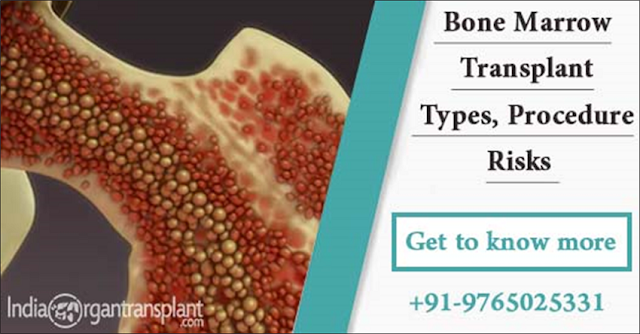1. What is bone marrow?
Bone marrow is a soft, spongy cancellous substance that fills the inner cavities of bones and produces blood. Like RBCs, WBCs and platelets. All new cells are produced in bone marrow.
Bone marrow also contains two types of stem cells:
- Hemopoietic that produce blood cells called HSCs
- Stromal which can produce fat, cartilage and bone.
Red blood cells, platelets and most white blood cells are formed in red marrow. However, some white blood cells develop in yellow marrow. The color of yellow marrow appears yellow due to higher number of fat cells.
Erythrocytes i.e. Red Blood Cells producing red bone marrow are restricted to sternum, ribs, vertebrae, cranial bones and long bones i.e. femur and humerus.
2. What is bone marrow transplant (BMT)?
Bone marrow transplant (BMT) is an advanced procedure through which diseased bone marrow, unable to produce erythrocytes, is replaced with a healthy one.
For bone marrow transplant procedure, healthy bone marrow can be harvested from a donor, or from the patient himself. The bone marrow transplantation is extremely useful for patients suffering from leukemia i.e. blood cancer or other diseases affect the structure and functioning of bone marrow.
3. Why is bone marrow transplant needed?
Bone marrow production is usually hampered or impaired due to a disease, an infection or chemotherapy and may entail bone marrow transplant.
Bone marrow transplant can be used to:
- Replace diseased, nonfunctioning bone marrow with healthy functioning bone marrow
- Regenerate a new immune system that will fight existing or residual leukemia
- Replace bone marrow with genetically healthy functioning bone marrow to prevent further damage from a genetic disease process such as Hurler's syndrome and Adrenoleukodystrophy.
- As ‘Rescue therapy’, to replace bone marrow and restore its normal functions following chemotherapy and/or radiation given to treat a malignancy.
Diseases that can be treated by BMT
The diseases or conditions that necessitate bone marrow transplant can be Cancerous i.e. Malignant or Non-Cancerous.
Malignant conditions that are treated with bone marrow transplant procedure include:
- Acute Lymphoblastic Leukemia (ALL)
- Acute Myeloid Leukemia (AML)
- Chronic Myeloid Leukemia (CML)
- Hodgkin Lymphoma
- Non-Hodgkin Lymphoma
- Myelodysplastic syndrome
- Multiple Myeloma
- Neuroblastoma
- Other rare cancers of childhood
However, Non Cancerous conditions requiring bone marrow transplant include:
- Thalassaemia
- Sickle Cell Anemia
- Aplastic Anemia
- Fanconi Anemia
- Inborn errors of metabolism
- Bone marrow failure syndromes
- Congenital Immuno-deficiency syndromes
Phone Numbers Reach Us India & International:
+91 9765025331
FAQs about BMT
1. How are the stem cells collected?
BMT is performed by transferring stem cells from one person to another. Stem cells can be collected either from the circulating cells in the blood i.e. through peripheral system or through bone marrow harvest from a donor. The donor may be patient himself or someone else whose bone marrow matches with patient
2. What are diseases commonly treated with BMT?
Most commonly treated diseases with BMT are:
- Leukemia
- Severe aplastic anemia
- Lymphomas
- Multiple myeloma
- Immune deficiency disorders
3. What is long-term outlook for BMT?
Prognosis after BMT depends on type of transplant, extent of disease, disease response to the treatment, age, general health and genetic factors.
However, long-term outlook for BMT from survival point of view are encouraging yet vary from person to person.
For more detail Visit to: www.indiaorgantransplant.com
We are offering low budget packages as per their convenience.


Comments
Post a Comment